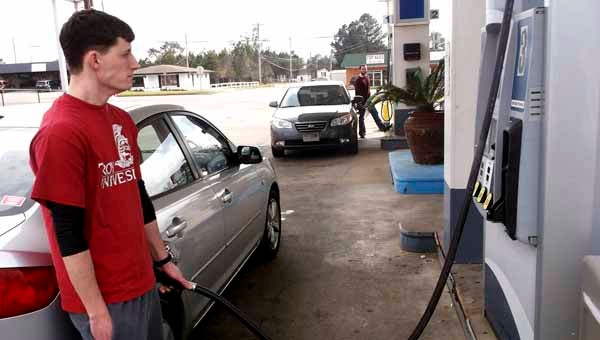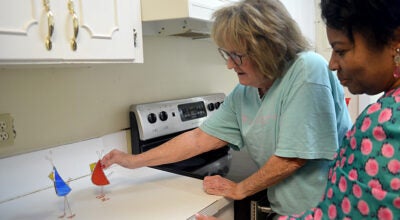Fast rising gas prices hit home
Published 11:00 pm Friday, March 1, 2013

Troy University senior biology major, Clark Gully, shopped around for the best gas prices on Friday afternoon before pumping gas at the Z-tec on U.S. 231, which is $.10 cheaper than its competition.
Written by Gabrielle Pack, Intern with The Messenger
College students are feeling the pinch of rising gas prices, as are many others in Pike County.
“Gas is a necessity and you cannot go far without it,” said Carter Pierce, Troy University junior from Pensacola, Fla. It is an advantage to have a smaller car that’s great on gas, but it has put a damper on future road trips. I would love to see the prices go down,” he said.
Clark Gully, senior biology major said the rising gas prices are hurting his wallet, but he goes to the stations just as much as he did when prices were cheaper.
The gas prices in Troy have increased 32 cents per gallon within the last month.
“Gas prices have risen in the last several weeks and several cents per day,” said Dr. Scott Beaulier, executive director of Manuel H. Johnson Center for Political Economy Holder. “It really affects people on fixed and lower incomes because it has a regressive effect which hurts the share of income of poor or middle class people.” The rising prices eventually will affect other spending decisions such as necessary food or household items, he said.
This recent spike has been among the fastest on record.
“The state gas prices have increased 44 cents in a month time,” said Clay Ingram, Public Relations and Marketing Manager for AAA. “Based on the demand and supply of consumers, the increase in prices is a lot higher than it should be.”
Several factors played into creating this problem. Extremely cold weather in the northeast caused the purchase of more crude oil for heating purposes. That bumped up the demand tremendously, he said.
Global demand is up 10 percent in the past year alone, but it is not enough to justify the 44-cent increase the state saw in the past two months. He said the primary factors of the problem are investors who are driving crude oil prices up anticipating an increase in demand during the spring and the lack of price shopping.
“Investors are purchasing excessive amounts of crude oil hoping to resell it and make a profit, but these decisions are pushing the prices up,” Ingram said. “We are doing a terrible job at price shopping.” Consumers have to be aware of gas prices in normal day-to-day settings.
“If consumers would make an effort to shop for cheaper gas prices every time they go to the pump that would generate more price competition. Stations with higher gas prices would then lower their prices to compete with their competition.”




